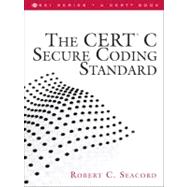
What is included with this book?
| Introduction | |
| Hiv and Women's Reproductive Rights Reproductive Choice in the Age of AIDS - | |
| Policy and Counselling Issues HIV Testing in Pregnancy - | |
| HIV Transmission Risk An AIDS Risk Reduction Project with Inner-City Women - | |
| Women's Consciousness in the Crack Culture | |
| Women Providing Aids-Related Services Women Volunteers at Gmhc - | |
| Paradoxical Practices - | |
| Psychologists as Scientists in the Field of AIDS | |
| Representations of Women and Aids Knowing Aids through the Televised Science Documentary | |
| `With Champagne and Roses' - | |
| Women at Risk from//in AIDS Discourse | |
| Conclusion | |
| Preface | p. xvii |
| Acknowledgments | p. xxxi |
| About the Author | p. xxxiii |
| Using This Standard | p. 1 |
| System Qualities | p. 1 |
| Automatically Generated Code | p. 2 |
| Compliance | p. 3 |
| Preprocessor (PRE) | p. 5 |
| PRE00-C. Prefer inline or static functions to function-like macros | p. 6 |
| PRE01-C. Use parentheses within macros around parameter names | p. 11 |
| PRE02-C. Macro replacement lists should be parenthesized | p. 13 |
| PRE03-C. Prefer type definitions to defines for encoding types | p. 15 |
| PRE04-C. Do not reuse a standard header file name | p. 16 |
| PRE05-C. Understand macro replacement when concatenating tokens or performing stringification | p. 18 |
| PRE06-C. Enclose header files in an inclusion guard | p. 21 |
| PRE07-C. Avoid using repeated question marks | p. 22 |
| PRE08-C. Guarantee that header file names are unique | p. 24 |
| PRE09-C. Do not replace secure functions with less secure functions | p. 26 |
| PRE10-C. Wrap multistatement macros in a do-while loop | p. 27 |
| PRE30-C. Do not create a universal character name through concatenation | p. 29 |
| PRE31-C. Never invoke an unsafe macro with arguments containing assignment, increment, decrement, volatile access, or function call | p. 30 |
| Declarations and Initialization (DCL) | p. 33 |
| DCL00-C. const-qualify immutable objects | p. 35 |
| DCL01-C. Do not reuse variable names in subscopes | p. 36 |
| DCL02-C. Use visually distinct identifiers | p. 38 |
| DCL03-C. Use a static assertion to test the value of a constant expression | p. 39 |
| DCL04-C. Do not declare more than one variable per declaration | p. 42 |
| DCL05-C. Use type definitions to improve code readability | p. 44 |
| DCL06-C. Use meaningful symbolic constants to represent literal values in program logic | p. 45 |
| DCL07-C. Include the appropriate type information in function declarators | p. 51 |
| DCL08-C. Properly encode relationships in constant definitions | p. 54 |
| DCL09-C. Declare functions that return an errno error code with a return type of errno_t | p. 57 |
| DCL10-C. Maintain the contract between the writer and caller of variadic functions | p. 59 |
| DCL11-C. Understand the type issues associated with variadic functions | p. 62 |
| DCL12-C. Implement abstract data types using opaque types | p. 64 |
| DCL13-C. Declare function parameters that are pointers to values not changed by the function as const | p. 66 |
| DCL14-C. Do not make assumptions about the order of global variable initialization across translation units | |
| Table of Contents provided by Publisher. All Rights Reserved. |
The New copy of this book will include any supplemental materials advertised. Please check the title of the book to determine if it should include any access cards, study guides, lab manuals, CDs, etc.
The Used, Rental and eBook copies of this book are not guaranteed to include any supplemental materials. Typically, only the book itself is included. This is true even if the title states it includes any access cards, study guides, lab manuals, CDs, etc.